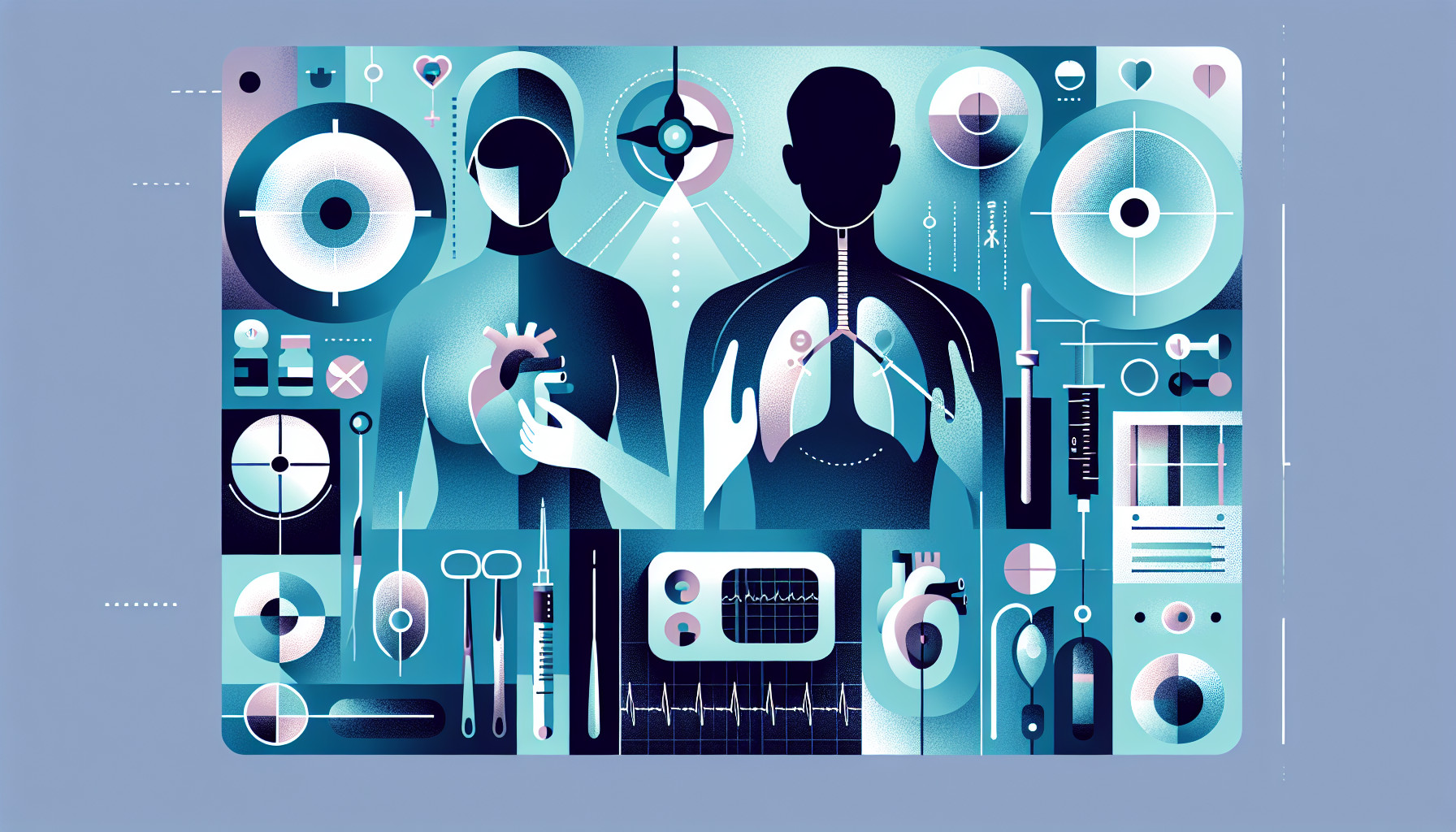Our Summary
This study looked at how to prevent the spread of COVID-19 in patients undergoing chest surgery during the pandemic’s first wave in 2020. The research was based in a lung clinic in Munich, Germany, and it looked at patients who had surgery between March and May 2020. Before implementing safety measures, three patients caught COVID-19 after their surgery. However, after the safety measures were put in place, no patients caught the virus post-operation.
The study also compared symptoms of COVID-19 patients and patients recovering from chest surgery. It found that fever, shortness of breath, dry cough, and diarrhea were more common in COVID-19 patients, while loss of smell, phlegm, fatigue, body aches, and nausea were common in both groups. These findings will help identify potential COVID-19 cases among post-operative patients in the future.
The researchers concluded that their study offers a successful model for implementing safety measures to minimize the risk of COVID-19 infection for chest surgery patients.
FAQs
- What were the safety measures implemented to prevent the spread of COVID-19 among patients undergoing chest surgery?
- How did symptoms of COVID-19 and post-operative chest surgery patients compare in this study?
- How successful were the safety measures in preventing COVID-19 infections among chest surgery patients according to the study?
Doctor’s Tip
One helpful tip a doctor might tell a patient about thoracic surgery is to follow all post-operative instructions carefully, including taking prescribed medications, attending follow-up appointments, and avoiding strenuous activities until cleared by the surgeon. It is also important to practice good hygiene, including frequent handwashing, to reduce the risk of infection during the recovery period. Lastly, if any concerning symptoms develop, such as fever, shortness of breath, or chest pain, it is important to contact your healthcare provider immediately.
Suitable For
Patients recommended for thoracic surgery typically have conditions affecting the lungs, chest wall, diaphragm, esophagus, or mediastinum. Some common indications for thoracic surgery include lung cancer, esophageal cancer, chest wall tumors, benign lung nodules, pleural effusions, empyema, pneumothorax, hiatal hernia, and diaphragmatic hernia. These patients may require surgery to remove tumors, repair hernias, treat infections, or improve respiratory function.
Timeline
Before thoracic surgery:
- Consultation with a thoracic surgeon to discuss the need for surgery and potential risks and benefits.
- Pre-operative testing such as blood work, chest X-ray, and possibly a CT scan to evaluate the condition of the lungs and surrounding structures.
- Pre-operative appointments with other healthcare providers such as an anesthesiologist and pulmonologist to ensure the patient is medically stable for surgery.
- Pre-operative instructions such as fasting before surgery and stopping certain medications that may increase the risk of bleeding.
- Admission to the hospital on the day of surgery and preparation for the procedure.
After thoracic surgery:
- Recovery in the post-operative care unit (PACU) where vital signs are monitored and pain management is provided.
- Transfer to a hospital room for further recovery and monitoring.
- Physical therapy to help with breathing exercises and mobility.
- Follow-up appointments with the thoracic surgeon to monitor healing and address any concerns.
- Gradual return to normal activities and daily routine as healing progresses.
- Long-term follow-up to monitor for any complications or recurrence of the condition that required surgery.
What to Ask Your Doctor
What safety measures are in place to prevent the spread of COVID-19 during my thoracic surgery?
How will my recovery be affected by the pandemic and any potential COVID-19 exposure?
What symptoms should I watch out for after surgery that may indicate a potential COVID-19 infection?
How will my follow-up care be conducted in light of the pandemic?
Are there any specific precautions I should take after my surgery to reduce my risk of COVID-19 exposure?
Will I be tested for COVID-19 before my surgery, and if so, how will the results affect my treatment plan?
How has the hospital adjusted its protocols for thoracic surgery in response to the pandemic?
What is the hospital’s plan for managing COVID-19 cases among patients and staff?
How will my post-operative care be affected by any potential COVID-19 restrictions or limitations?
Are there any alternative treatment options or considerations I should be aware of due to the pandemic?
Reference
Authors: Stoleriu MG, Gerckens M, Ströh K, Kovács J, Samm N, Obereisenbuchner F, Hetrodt J, Schmidt FM, Reinmuth N, Heiß-Neumann M, Stacher-Priehse E, Koch I, Behr J, Ketscher C, Grützner U, Hatz R. Journal: Pneumologie. 2021 Dec;75(12):960-970. doi: 10.1055/a-1526-9979. Epub 2021 Jul 14. PMID: 34261146
